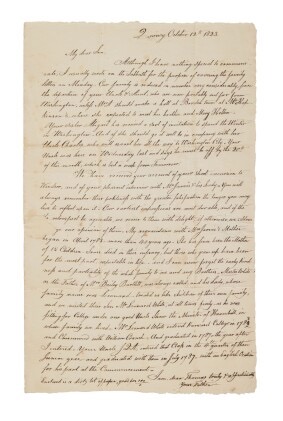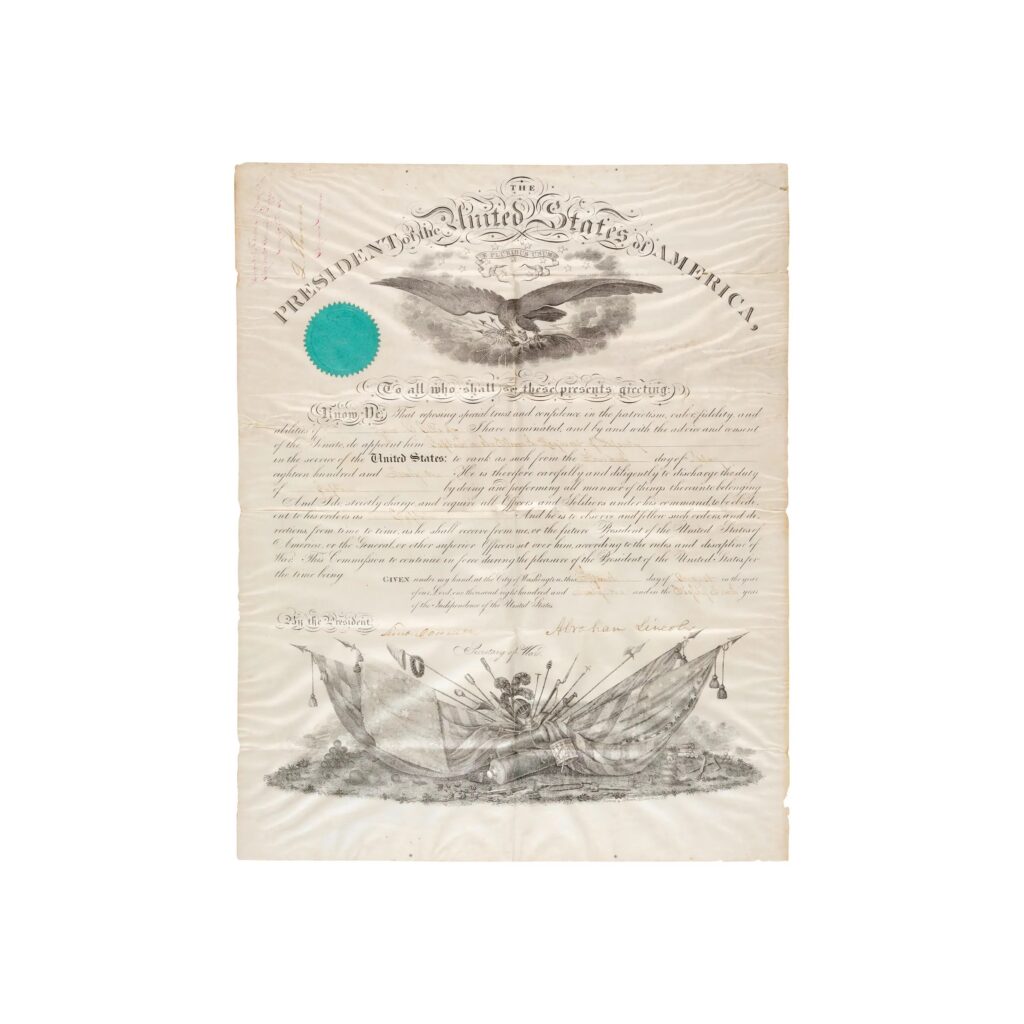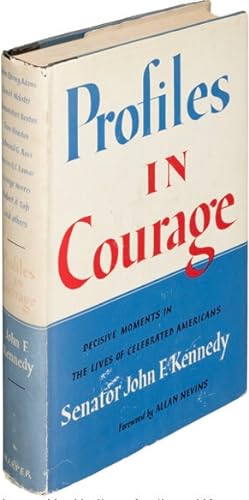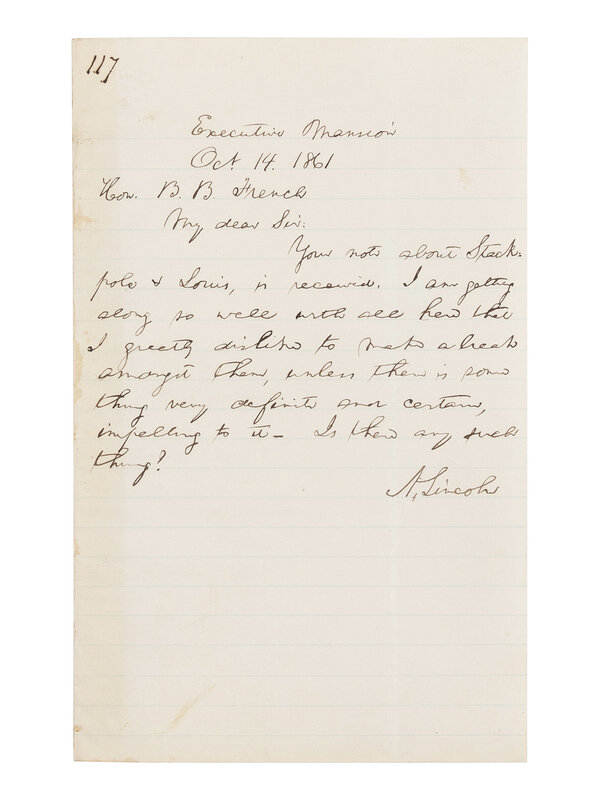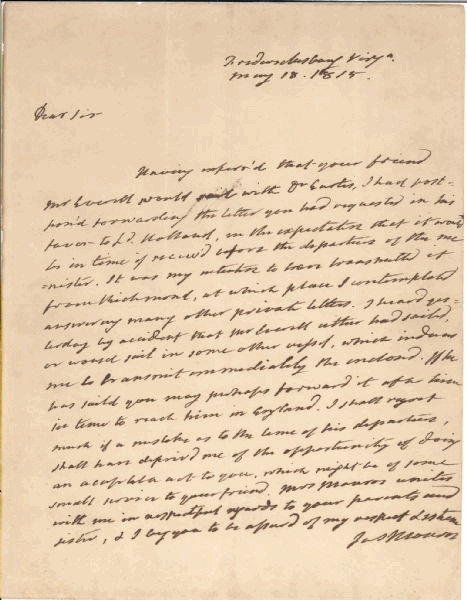(Adams, John)
Franking signature (“J Adams”) by the aged former president on a letter by his son Thomas Boylston Adams to his grandson Thomas Boylston Adams Jr.
Autograph letter signed (“Your Father”) by Thomas Boylston Adams, one page (330 x 207 mm), on a leaf of wove paper, Quincy, 12 October 1823, to his son Cadet Thomas B. Adams at Norwich Academy, Vermont, integral address panel annotated in red “Quincy Ms. Octr. 13th free” and franked by John Adams, docketed by the recipient (“Hon TB Adams | re’d Oct 17th 1823 | an’d 19th”).
John Adams’s youngest son sends family news and recollections of Harvard to his fourteen-year-old son Thomas, who was attending Norwich Academy in Vermont. The elder Thomas evidently wrote to his son every Sunday, and he did so on the date of the present letter even though he admits that “I have nothing special to communicate.” But he does inform the younger Thomas about various family peregrinations, including the travel of John Quincy Adams, then serving as James Monroe’s Secretary of State, back to the nation’s capital: “Our family is reduced in number very considerably since the departure of your Uncle & Aunt, who are now probably not far from Washington. … Your sister Abigail has received a sort of invitation to spend the Winter in Washington—And if she should go it will be in company with her Uncle Charles, who will escort her all the way to Washington City. Your Uncle was here on Wednesday last and says he must be off by the 20th of this month. …” Thomas Jr.’s recent visit with family friends the Jarvises sparks a somewhat rambling passage about a number of family friends, eventually jogging the father’s memory of his days at Harvard: “Mr. Leonard White entered Harvard College in 1783 and Chummed with William Cranach—And graduated in 1787—the year after I entered. Your Uncle J Q A, entered that Class in the 4th quarter of their Junior year and graduated with them in July 1787—with an English Oration for his part at the Commencement.” (John Quincy returned to Harvard in 1806 as the Boylston Professor of Rhetoric and Oratory.) Boylston closes the letter with a postscript indicating that he has sent his son a bit of pocket money.
The letter is franked in a very tremulous hand by the 88-year-old patriarch of the family, John Adams. Although he could survive, famously, until the Fourth of July 1826, by 1823, Adams’s health had declined precipitously. He had constant pains in his back, suffered from rheumatism so acute that he could not get about without a cane, and he could no longer mount a horse. His hearing and eyesight were going, and he had lost his teeth.
Still, a year earlier, 20 September 1822, he had sent “dear Grandson Thomas B. Adams” an encouraging letter when the latter entered Norwich Academy: “I think your whole behaviour since you left me has been manly & generous—Persevere to the end. I need not give you any other advice than such as I have frequently given you when you was here. Pay a strict attention & veneration to the government & governors of the Academy; a proper respect & deference to those Cadets who are before you in age & class; friendly affection to your equals & class mates & invariable kindness to all your inferiors if any such these be—” (Early Access document from The Adams Papers: https://founders.archives.gov/documents/Adams/99-03-02-4167).
Thomas Boylston Adams’s promising legal and political career was derailed by acute alcoholism. He and his family lived for long stretches with his parents, with additional financial support provided by his brother John Quincy. When Thomas died in 1832, aged 59, John Quincy Adams remembered him as “my dear and amiable brother,” but JQA’s son Charles Francis Adams recorded in his diary that his Uncle Thomas “paid a bitter penance for his follies and left his Children to share the same as his only legacy.”
